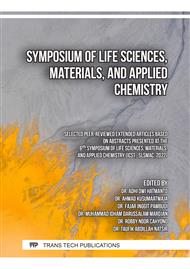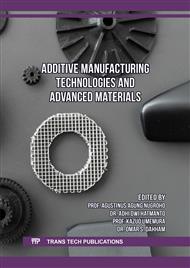[1]
C. J. Kirkham and T. Ono, First-Principles Study on Interlayer States at the 4H-SiC/SiO2 Interface and the Effect of Oxygen-Related Defects, J. Phys. Soc. Jpn. 85 (2016) 024701.
DOI: 10.7566/jpsj.85.024701
Google Scholar
[2]
T. Kimoto, Material science and device physics in SiC technology for high-voltage power devices Jpn. J. Appl. Phys. 54 (2015) 040103.
DOI: 10.7567/jjap.54.040103
Google Scholar
[3]
J. L. Cantin, H.J. von Bardeleben, Y. Shishkin, Y. Ke, R.P. Devaty, and W.J. Choyke, Identification of the Carbon Dangling Bond Center at the 4H-SiC/SiO2 Interface by an EPR Study in Oxidized Porous SiC Phys. Rev. Lett. 92 (2004) 015502.
DOI: 10.4028/www.scientific.net/msf.457-460.1457
Google Scholar
[4]
S. Wang, S. Dhar, S. Wang, A.C. Ahyi, A. Franceschetti, J.R. Williams, L.C. Feldman, and S.T. Pantelides, Bonding at the SiC−SiO2 Interface and the Effects of Nitrogen and Hydrogen Phys. Rev. Lett. 98 (2007) 026101.
DOI: 10.1103/physrevlett.98.026101
Google Scholar
[5]
Q. Zhu, F. Qin, W. Li, and D. Wang, Electrical and physical properties of 4H-SiC MOS interface with electron cyclotron resonance microwave nitrogen plasma post-oxidation annealing, Physica B 432 (2014) 89.
DOI: 10.1016/j.physb.2013.09.043
Google Scholar
[6]
H. Hirai and K. Kita, Suppression of byproduct generation at 4H-SiC/SiO2 interface by the control of oxidation conditions characterized by infrared spectroscopy, Appl. Phys. Express 8 (2015) 021401.
DOI: 10.7567/apex.8.021401
Google Scholar
[7]
J. H. Dycus, W. Xu, D. J. Lichtenwalner, B. Hull, J. W. Palmour, and J. M. LeBeau, Structure and chemistry of passivated SiC/SiO2 interfaces, Appl. Phys. Lett. 108 (2016) 201607.
DOI: 10.1063/1.4951677
Google Scholar
[8]
M. Amigou, M. F. Beaufort, A. Declemy, S. Leclerc, and J. F. Barbot, Strain Measurements on Nitrogen Implanted 4H-SiC, Mater. Sci. Forum 679 (2011) 185.
DOI: 10.4028/www.scientific.net/msf.679-680.185
Google Scholar
[9]
S. Sasaki, J. Suda, and T. Kimoto, Lattice mismatch and crystallographic tilt induced by high-dose ion-implantation into 4H-SiC, J. Appl. Phys. 111 (2012) 103715.
DOI: 10.1063/1.4720435
Google Scholar
[10]
M. Liu, S. Zhang, X. Yang, X. Chen, Z. Fan, X. Wang, F. Yang, C. Ma, and Z. He, Enhancing oxidation rate of 4H–SiC by oxygen ion implantation, J. Mater. Sci. 54 (2019) 1147.
DOI: 10.1007/s10853-018-2921-0
Google Scholar
[11]
X. Li, A. Ermakov, V. Amarasinghe, E. Garfunkel, T. Gustafsson, and L.C. Feldman, Oxidation induced stress in SiO2/SiC structures, Appl. Phys. Lett. 110 (2017) 141604.
DOI: 10.1063/1.4979544
Google Scholar
[12]
K. Kita and A. D. Hatmanto, Significant Structural Distortion in the Surface Region of 4H-SiC Induced by Thermal Oxidation and Recovered by Ar Annealing, ECS Trans. 86 (2018) 63.
DOI: 10.1149/08612.0063ecst
Google Scholar
[13]
A. D. Hatmanto and K. Kita, The kinetics of lattice distortion introduction and lattice relaxation at the surface of thermally-oxidized 4H-SiC (0001), Appl. Phys. Express 12 (2019) 055505.
DOI: 10.7567/1882-0786/ab103e
Google Scholar
[14]
M. D. Ventra and S. T. Pantelides, J. Electron. Mater. 3 (2000) 29.
Google Scholar
[15]
A. Gavrikov, A. Knizhnik, A. Safonov, A. Scherbinin, A. Bagatur'yants, B. Potapkin, A. Chatterjee, and K. Matocha, First-principles-based investigation of kinetic mechanism of SiC(0001) dry oxidation including defect generation and passivation, J. Appl. Phys. 104 (2008) 093508.
DOI: 10.1063/1.3006004
Google Scholar
[16]
T. Akiyama, A. Ito, K. Nakamura, T. Ito, H. Kageshima, M. Uematsu, and K. Shiraishi, First-principles investigations for oxidation reaction processes at 4H-SiC/SiO2 interface and its orientation dependence, Surf. Sci. 641 (2015) 174.
DOI: 10.1016/j.susc.2015.06.028
Google Scholar
[17]
A. D. Hatmanto and K. Kita, Physical analysis of remained oxidation byproducts as the origins of lattice distortion at the surface of 4H-SiC by Fourier-transform infrared spectroscopy, Jpn. J. Appl. Phys. 59 (2020) SMMA02.
DOI: 10.35848/1347-4065/ab7fe9
Google Scholar



